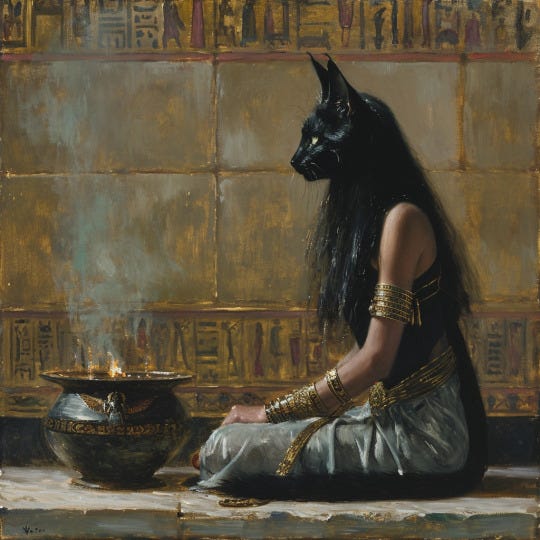It’s Not About the Hands: Identifying AI Art

🌈 Abstract
The article discusses the issue of AI-generated art being passed off as real art, using the example of a painting called "Bastet" that was claimed to be by an artist named Emile Corsi from 1877, but was actually AI-generated. The author argues against the spread of such misinformation and discusses ways to identify AI art, including looking for visual inconsistencies and doing research to verify the artist's existence.
🙋 Q&A
[01] The issue of AI-generated art being passed off as real
1. What is the main issue the article discusses?
- The article discusses the issue of AI-generated art being passed off as real art, using the example of a painting called "Bastet" that was claimed to be by an artist named Emile Corsi from 1877, but was actually AI-generated.
2. What is the author's stance on this issue?
- The author is against the spread of misinformation and is not opposed to AI art in general, but is against slapping a fake artist name and date on an AI-generated image and not disclaiming its AI origins in the original post.
3. What advice does the article provide for identifying AI art?
- The article discusses some visual cues that can indicate an artwork is AI-generated, such as the skin being "painted" in a different style from the rest of the work, the cat face being a very different style, and elements like the gold draped over the leg not blending in properly.
- However, the article also notes that as AI technology improves, these visual "tells" may become less reliable, and the better solution is to do research to verify the artist's existence before sharing art online.
[02] Importance of research and fact-checking
1. Why does the author emphasize the importance of research and fact-checking when encountering art online?
- The author notes that they were able to immediately identify the "Bastet" painting as AI-generated due to their extensive expertise in 19th century academic painting, but the average person is unlikely to have that level of specialized knowledge.
- Therefore, the author suggests that the better solution is to do research, such as a simple Google search, to verify the artist's existence before sharing art online, especially if the art is attached to a radical claim.
2. What does the author say about people's willingness to do research and fact-checking for important news versus "silly art posts"?
- The author notes that people are often unwilling to do research and fact-checking for important news, so it may be asking too much for them to do it for "silly art posts" online.